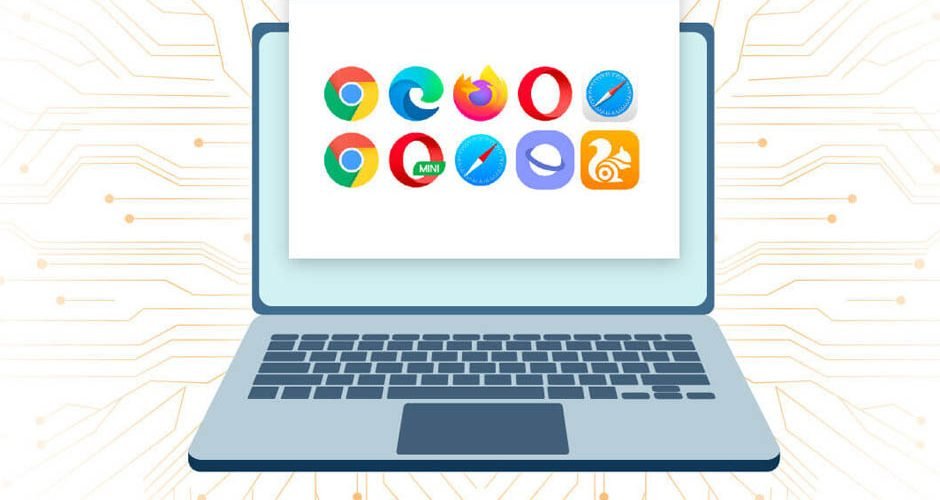Cross-browser testing tests applications to ensure they function correctly and consistently. It is an essential component of web development, as each browser has its unique way of rendering web content, which can result in varying results.
Web developers must ensure their websites work correctly on web browsers like Google Chrome, Mozilla Firefox, Apple Safari, Microsoft Edge, and more. Cross-browser testing involves testing a website on browsers and versions of the same browser to ensure that it works correctly and consistently.
The goal of cross-browser testing is to detect any errors or inconsistencies in website functionality in specific web browsers or versions. It can also help identify compatibility issues with various devices.
Several tools are available to aid cross-browser testing, including automated and manual testing tools. Automated testing tools use scripts to simulate user behavior and test website functionality across different web browsers, while manual testing involves manually testing a website on other browsers.
Cross-browser testing is essential because web browsers constantly evolve, with new features and updates regularly released. As a result, a website that works perfectly on one browser may encounter issues on another browser, leading to a poor user experience and potentially lost business.
Types of Tests Developers Run
During cross-browser testing, developers perform various tests to ensure that websites and web applications function correctly and consistently across different browsers and devices. These tests include:
- Functional testing: Developers test website functionality across browsers, ensuring all website features work as intended.
- Compatibility testing: Developers test websites on different browsers and devices, ensuring they function correctly on all supported platforms.
- Performance testing: Developers test website performance across different browsers, ensuring they load quickly and operate smoothly.
- Usability testing: Developers test website usability across different browsers, ensuring users can navigate the website easily and efficiently.
- Security testing: Developers test website security across different browsers, ensuring the website is secure and protected against cyber threats.
By performing these tests, developers can ensure that their websites and web applications work correctly and consistently across different web browsers and devices, delivering a high-quality user experience that meets the expectations of modern web users.
Importance of Cross-browser Testing
- Cross-browser testing is vital to web development, ensuring that websites and web applications work consistently across different browsers and devices. With the ever-increasing number of web browsers available, including desktop and mobile browsers, cross-browser testing is crucial to delivering a high-quality user experience.
- One of the primary reasons for cross-browser testing is that each web browser renders web content differently, leading to variations in website functionality and user experience. For example, a website that works perfectly on Google Chrome may not function correctly on Mozilla Firefox or Apple Safari. Therefore, web developers must test their websites on different browsers and versions to ensure they work correctly and consistently.
- Cross-browser testing tools have become essential in modern web development, providing developers with various automated and manual testing options. Automated testing tools like Selenium and Cypress use scripts to simulate user behavior and test website functionality across different web browsers. These tools can save developers significant time and effort, allowing them to test their websites on multiple browsers simultaneously.
- Manual testing methods involve testing a website on different browsers, allowing developers to identify any issues with website functionality and user experience. This approach can be time-consuming, but it gives developers more in-depth insights into how their websites perform across different browsers.
- Ai-based testing insights are also becoming increasingly popular, providing developers with detailed insights into how their websites perform across different browsers and devices. These tools use ML to analyze website performance data, identifying functionality and user experience issues.
- Cross-browser testing is essential to deliver a high-quality user experience, as users expect websites to work seamlessly across different browsers and devices. Inconsistencies in website functionality can lead to a poor user experience, losing business, and decreased customer satisfaction.
- Furthermore, cross-browser testing is critical for website accessibility, ensuring that websites are accessible to users with disabilities. Users with visual impairments or other disabilities may use specialized web browsers, such as screen readers, which require websites to be designed with accessibility in mind.
- Besides improving website functionality and accessibility, cross-browser testing can improve website performance. Different web browsers have different performance characteristics, such as page load times, which can affect website performance. By testing their websites on different browsers, developers can identify and optimize performance issues for better performance.
- Cross-browser testing can also help identify compatibility issues with devices. Device screen sizes and resolutions vary, affecting website layout and functionality. By testing their websites on different devices, developers can ensure they function correctly across different screen sizes and resolutions.
Conclusion
In conclusion, cross-browser testing is vital to web development, ensuring that websites and web applications work consistently across different browsers and devices. Cross-browser testing tools, such as automated testing tools, manual testing methods, and Ai-based testing insights, have become essential in modern web development, providing developers with detailed insights into website performance and user experience.
HeadSpin is one such tool. Users can connect to real devices and test their apps on multiple browsers. The HeadSpin AI provides structured and detailed insights into user experience after every test. These insights help developers address concerns and build comprehensive apps.
By testing their websites on different web browsers and devices, developers can improve website functionality, accessibility, and performance, delivering a high-quality user experience that meets the expectations of modern web users. Therefore, web developers must prioritize cross-browser testing in their web development process to ensure the success of their websites and web applications.





